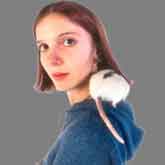It All Started With The Colwart
 Do you like cabbage. No? How about broccoli? Perhaps you crave brussel sprouts. Did you know that all these vegetables, plus kohlrabi, kale, cauliflower and collard greens, trace their origins from the plant Brassica oleracea? Brassica oleracea, commonly called colwart, of the cruciferae/brassicacae or mustard family, was originally cultivated thousands of years ago along the coast of Europe. It is perhaps the most striking example of selective cultivation, (choosing the seeds of plants that have the characteristics early cultivators wanted to emphasize) by early Europeans. The colewart was a smallish, leafy plant, with none of the features we recognize in this modern family of vegetables. Plant scientists believe that the first focus of these early farmers was the leaves of the colewart. By selectively choosing plants with the biggest leaves, and harvesting and cultivating their seeds, after hundreds of years, kale was born.
Do you like cabbage. No? How about broccoli? Perhaps you crave brussel sprouts. Did you know that all these vegetables, plus kohlrabi, kale, cauliflower and collard greens, trace their origins from the plant Brassica oleracea? Brassica oleracea, commonly called colwart, of the cruciferae/brassicacae or mustard family, was originally cultivated thousands of years ago along the coast of Europe. It is perhaps the most striking example of selective cultivation, (choosing the seeds of plants that have the characteristics early cultivators wanted to emphasize) by early Europeans. The colewart was a smallish, leafy plant, with none of the features we recognize in this modern family of vegetables. Plant scientists believe that the first focus of these early farmers was the leaves of the colewart. By selectively choosing plants with the biggest leaves, and harvesting and cultivating their seeds, after hundreds of years, kale was born.
That was fine for some, but others wanted more flavorful and smaller leaves. So another part of the plant was emphasized, resulting in a very dense bunch of leaves at the center of the plant, growing into a head, what we know as a head of cabbage. But ancient farmers didn’t stop there. Create a plant with big fat stems and you have kohlrabi. The Romans enlarged the stems and flower buds, but kept the buds tightly closed, and the result was broccoli. Do the same but get rid of the chlorophyll and other Europeans grew cauliflower. Beef up the buds and get tiny cabbages on a stalk, what we know as brussel sprouts. All from a single plant ancestor. All modern members of the Brassica family share common traits. They are low in calories and rich in vitamins and minerals.
Also, recent studies have pointed to the brassicacae as containing cancer-fighting compounds and anti-oxidants such as sulphur-containing glucosinolates. These sulforaphane compounds are thought to block the development of cancer cells while stimulating the body’s own production of detoxifying enzymes. And it’s sulphur that gives these vegetables their distinct hot and pungent smell and taste. So when it comes to cruciferae, the adage may well be, ‘if it smells bad, it’s good for you.’ This remarkable group of vegetables promotes health, offers a variety of tastes and was perfected long before modern farming methods, genetically altered plants, or pesticides came along. So next time you sit down for, cabbage, I mean broccoli, or was that kale. Never mind, you know what I mean.






